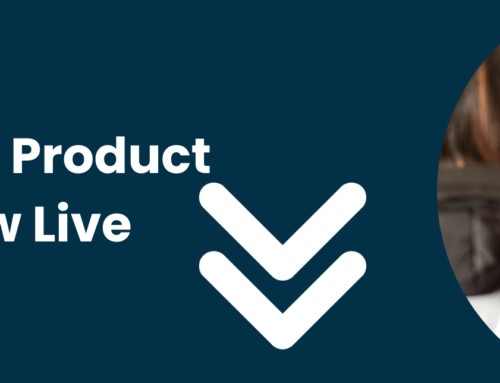Hi everyone and welcome to this week’s protection update.
I hope you’ve had a good week and are looking forward to the weekend.
This week I put my board report together with details of how we’re doing from a protection point of view. And we’re doing well.
But the one area for me which has always had a ‘need for improvement’ comment next to it is income protection.
1 in 10 of the protection policies we recommend are income protection. It’s around 10% to 11%.
I’d like that to be closer to 14% and we can do it if we focus on it.
Now there was an article in health and protection magazine this week talking about Holloway Friendly who have been paying what appears to be the longest income protection claim.
Click here for the Health & Protection Longest IP Claim article
It actually started before I even started in this industry – 33 years ago and they are still paying it now. That sounds like it started way back in 1989 and Holloway have been paying it ever since.
Why? Probably because it’s an own occupation policy. That customer can’t do their own occupation so they are being paid their income protection claim.
And I wonder whether we’re missing a trick really when we explain the value of an income protection policy?
Let’s say you’ve got a client who is 30.
They plan to retire when they get to age 67. That means there are 37 years of their working life left.
If we design the income protection policy to run to retirement there is 37 years’ worth of value.
And let’s say the policy is £2000 per month.
£2000 a month x 12 months is £24,000. And x 37 years, that’s worth £888,000. And that’s without any cost-of-living rises (which you can factor in by making the policy increase each year with indexation).
An adviser and principal of his business with The Right Mortgage called Alan Whitworth told me a really good sales tip to help demonstrate this point to your clients.
Let’s say you’re talking to your client about the impact of losing their income.
Ask them how much would they need to pay the mortgage, the bills and just to maintain a normal standard of living. How much would you need each month.
What Alan would do is pass his calculator to the client.
Let’s say they said, about £2,000 a month.
Ok, Alan would say. Just type that into the calculator.
We need the annual figure so multiply that by 12… so the client would press X 12 enter.
Ok, now how long will you be working for? When are you planning to retire? When is the state retirement age?
67? And you’re 30 right now?
Ok, on your calculator, just multiply that figure by 37 because that’s how many years you’ve got until you retire.
And what does it say on the calculator? £888,000.
That’s how much money you would need to pay your mortgage, the normal bills and just to maintain a normal standard of living between now and then?
Engaging the client in the conversation gets you proper buy in and I quite like that because it puts the value of the policy into perspective. It’s not just £2,000 a month. It’s a value of nearly a £1,000,000.
State benefits are not very good.
Remember that statutory sick pay is just £ 99.35 a week at the moment. You have to be an employed person to claim it and you will only receive it for up to 28 weeks.
In this current cost of living crisis is £99.35 going to cut it for most clients?
I don’t think so and if you ask your clients, they will say the same.
Income protection is a superb sales opportunity because it’s one of those things your clients genuinely need you for. They can’t get it themselves without going through an adviser.
Recently, I updated my Income Protection policy because the deferred period was wrong now that I work here at the Right Mortgage.
It’s definitely worth having those review meetings with your clients because things will change from time to time and its worth making sure any plans they have in place remain to be fit for purpose.
Or, if you’ve got clients who have other protection plans but not Income Protection; review that and talk about this missing piece of the jigsaw. What happens when you can’t work and you stop being paid? That’s a real problem.
And if you’re talking to mortgage clients. You’ve probably heard me talk about this before but use the risk statement on the mortgage illustration or mortgage offer. The regulator for financial services gives you (the adviser) a duty of care to mention the risks associated with taking out what might just be the biggest loan they are ever going to take.
The map this out by providing this bold statement which says “Your home is at risk if you cannot keep up payments on your mortgage”.
Your home is at Risk? What does that mean? You could lose it!
What does that mean? It means it could be repossessed if you can’t keep up the monthly payments.
Again, ask the client. Put them in the driving seat. And how could that happen? How could you find yourself in a position where you can’t afford your mortgage?
They will be able to figure this out…
And after pondering it, they might say “I could be made redundant”. Yes, that’s a risk. Would you back yourself to be able to get another job?
Ok, what else? How else could you find yourself in a position where you can’t afford your mortgage?
“If I lost your income”? Yes, and how could that happen?
“If I became sick or maybe had an accident”.
Exactly. Those are things outside of your control.
Many people go off work sick each year. Some are only off for a short while. Others take a bit longer to recover. And some never actually go back to work again.
That’s why its important to have your own backup plan that you control.
- It pays you if you can’t do your own job. You won’t be expected to retrain and go and do another line of work – that’s what happens with the government sick pay system.
- It pays you the right amount that you need to pay your mortgage and bills. Remember statutory sick pay is less than £100 a week and you only get it for 6 months.
- And you can control how long you will get paid for if you’re ever in a position where you need it. That can be for the rest of your working life – not just 6 months.
And whilst I’m on my soap box about income protection; just remember all of those clients you have who work for themselves. There are lots of them out there and they are prime candidates for income protection.
Why?
Because when they don’t work, they don’t get paid.
They don’t have access to Statutory Sick pay.
You might remember the podcast I did last year about a sales angle specific to self-employed people and this was with regards to talking about national insurance contributions.
I built a calculator that will help you with those particular clients, but watch the podcast to see how the idea pulls together – it’s very simple and I’ve added a link in this week’s protection update.
Click here to watch the Income Protection for Self Employed Clients
So, here’s my call to action.
Some of you are doing magnificently well with your protection advice and recommendations. But is there room for improvement in terms of the thing which is most likely to happen to your clients – less serious sickness which stops them from working?
What would you target yourself in terms of your Life to Critical Illness Cover to Income Protection business mix?
Should it be more than 10% of your protection business?
It does feel like it should.
Let me know what you think a reasonable ratio of income protection within your protection business should look like?
So finally, I want to give a big shout out to some of our most prolific income protection writers from across the network. I’ve looked at the data from new business and I’m looking specifically at advisers who have written good volumes of protection business (more than 15 policies this year), but within that; they happen to have a high percentage of income protection.
This is based on data up to 12th May which is when I’ve recorded this protection update.
Fiona Conway (Fiona Conway & Associates) and Katie Tong (Mortgage Find Limited) – from what I can see, 32% of your protection policies recommended are income protection!
Mark Culham (HB Partners) Greig Portingale (Merigan Reis) and Alan Wilson (AIW Mortgages ltd) – you guys are all at 33% of your protection recommendations being income protection.
Benjamin Evans (MultiBroker) – you’re at 35%
Steve Morris (Advantage Financial Solutions) 36%
Lana Bates (A2B Financial Services) is at 38%
And Paula Clement (the Mortgages Group). A truly remarkable 50% of your business this year is income protection.
Well done everyone and apologies for anyone else not mentioned. There are quite a lot of you who do have a much higher average than the network average of 10% income protection business.
So if anyone wants some hints and tips about how to sell income protection; you can see we’ve got some great advisers within the network.
That’s it from me for another week everyone.
Remember to use the Protection Forum. You’ll find that on the adviser site – click on protection and there is a big button that will allow you to ask questions, talk to other advisers, help other advisers with your opinions and answers… and you might even want to put something on there about income protection….
Have a great weekend – see you soon!



